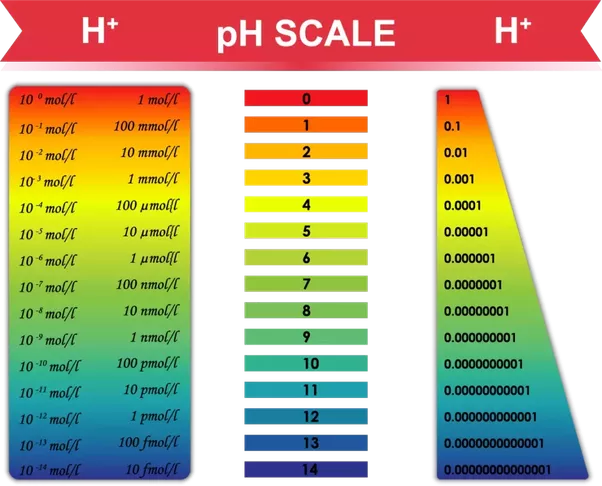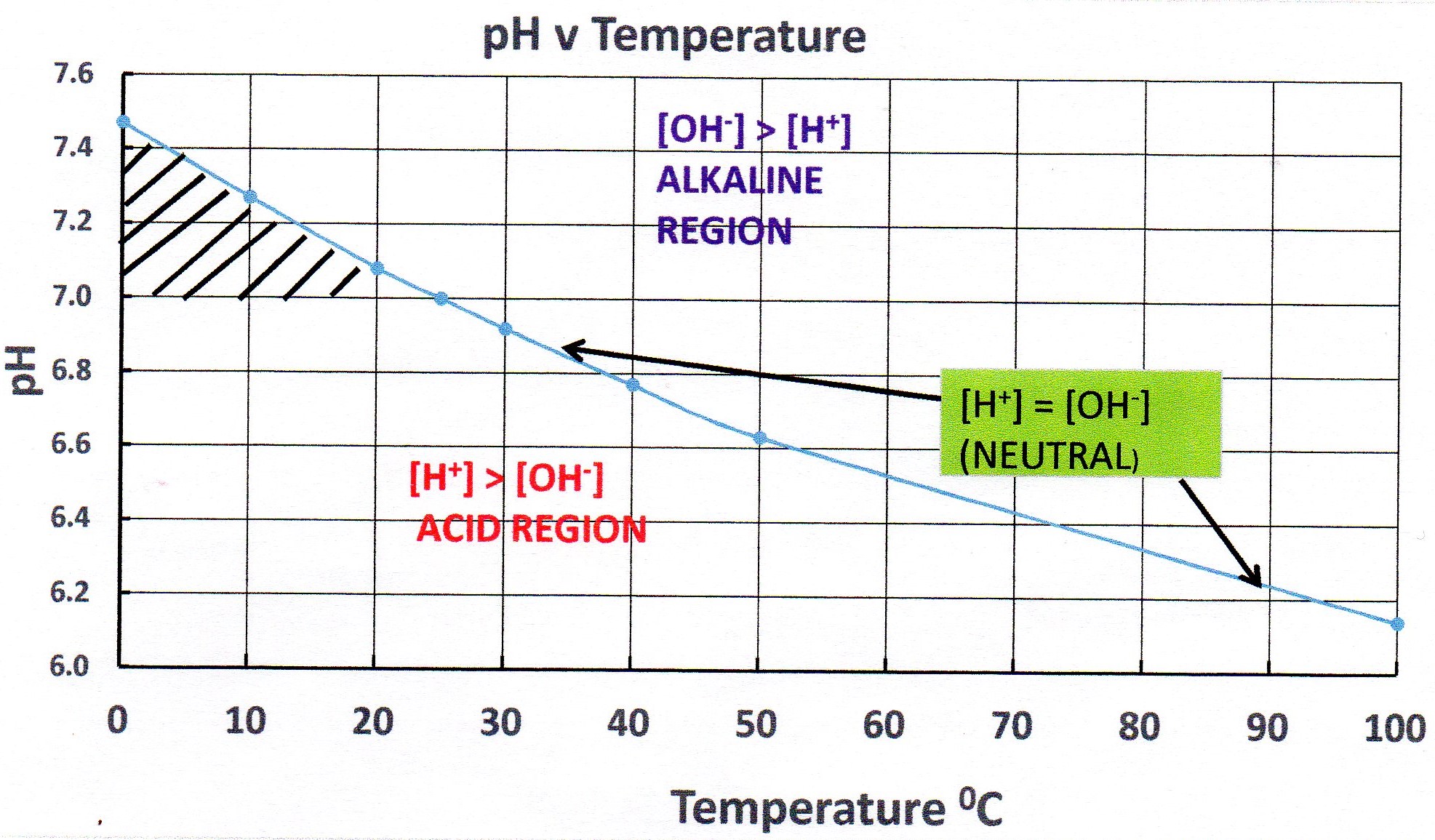Is it possible for acids to have a #"pH"# above #7#? If so, under what circumstances would that be?
1 Answer
Yes, you can have an acid whose pH is greater than 7.
Explanation:
Acidity is a measure of the
This means that
Therefore solution of
The relationship between pH and concentration is shown on the graphic:

A typical high school textbook will show a pH scale as going from 0 to 14.
A solution of pH 7 is said to be neutral. If the pH is less than 7 then the solution is acidic. If the pH is greater than 7 the solution is an alkali.
This works well under normal laboratory conditions but does not apply generally.
We need to consider the auto - ionisation of water:
For which:
In pure water
So to get the pH:
This gives us our neutral point.
The problem here is that this refers to standard conditions i.e a temperature of
The auto - ionisation of water is a bond breaking process so is endothermic:
If we raise the temperature, Le Chatelier's Principle would predict that the position of equilibrium would shift to the right. This would lead to greater dissociation thus increasing the value of
This has been measured for several temperatures. At
What would happen to the pH ?
This shows that the neutral point has now dropped to pH 6.77.
Using data provided by ChemguideUK I have produced the following chart showing the variation of pH with temperature for pure water:

As you can see, the pH falls as the temperature rises. This does not mean that the water has become more acidic. All along the blue line the water is neutral.
This is because
Any solution lying below the blue line is in the acidic region of the graph. This is because
Any solution lying above the blue line is in the alkaline region of the graph. This is because
Returning to the original question, you can see any solution lying in the black hatched region can have a pH greater than 7 yet is acidic.
Conversely, you can see that at higher temperatures you can have alkaline solutions whose pH is less than 7.
In summary, the criteria for a neutral solution is not necessarily that pH = 7, rather it is that
By the same argument an alkaline solution does not necessarily have a pH > 7, it is when
Finally, an acidic solution is not necessarily where pH < 7, it is when

